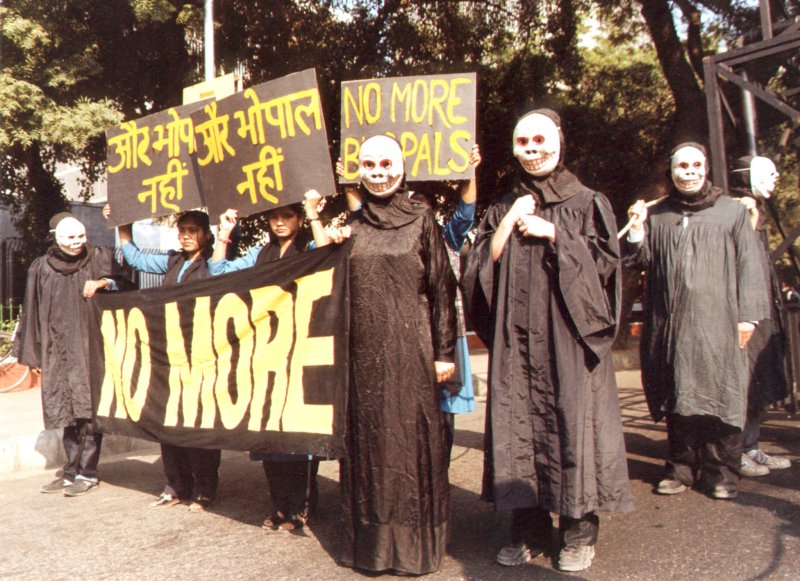DEL99120302 - 03 DECEMBER 1999 - NEW DELHI, INDIA: Greenpeace activists demonstrate in the Indian capital of New Delhi, December 3, to mark the 15th anniversary of the poisonous gas leak from the Union Carbide pesticide plant in Bhopal, which left nearly 3,000 people dead. Even today, hundreds of thousands of people suffer from breathlessness, poor vision, depression, loss of appetite and hundreds of children have been born with genetic disorders. Nearly 60 people die each month due to diseases linked with gas leak, known as the world's worst ever industrial accident. jr/str UPI |
License Photo
BHOPAL, India, Dec. 3 (UPI) -- Demonstrators marked Thursday's 25th anniversary of the chemical plant mishap linked to 25,000 deaths in Bhopal, India.
The night of Dec. 3, 1984, toxic gas escaped from a Union Carbide pesticide plant in the central Indian city of Bhopal. Within three days 10,000 people had died. Thousands of deaths, cancers, birth defects and other health issues have been blamed on the incident in the 25 years since. Activists say about 100,000 people now have illnesses attributable to the gas leak.
The area remains contaminated. Dow Chemical, which bought Union Carbide 15 years after the Bhopal leak, said a $470 million settlement it paid removes it from further responsibility. The Indian government has yet to take steps to do an environmental cleanup of the area.
Theories about the cause of the accident range from a maintenance problem to a disgruntled employee purposely putting water into a tank containing a large amount of methyl isocyanate. That mixture caused a buildup that, when it was vented, sent gas over an area in which about 500,000 people lived.






